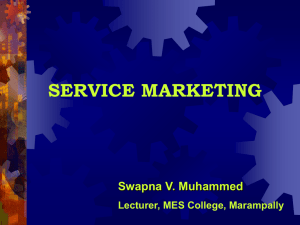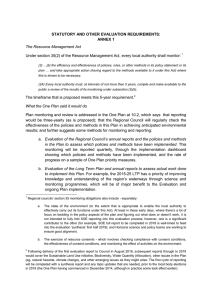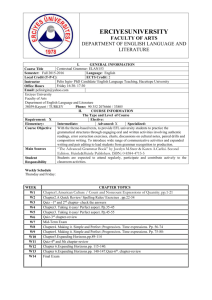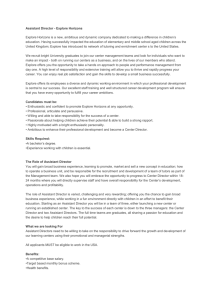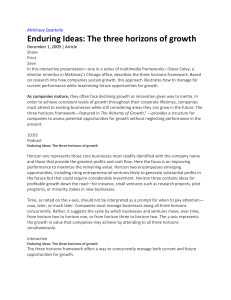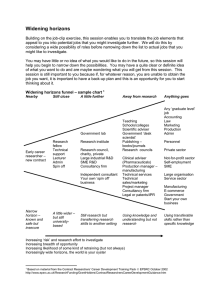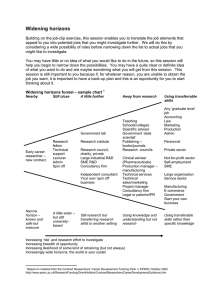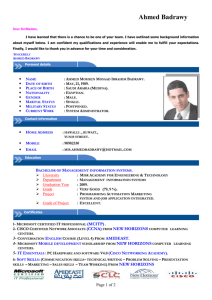ISDn3 – Workshop Introduction to Speakers – Day 2
advertisement
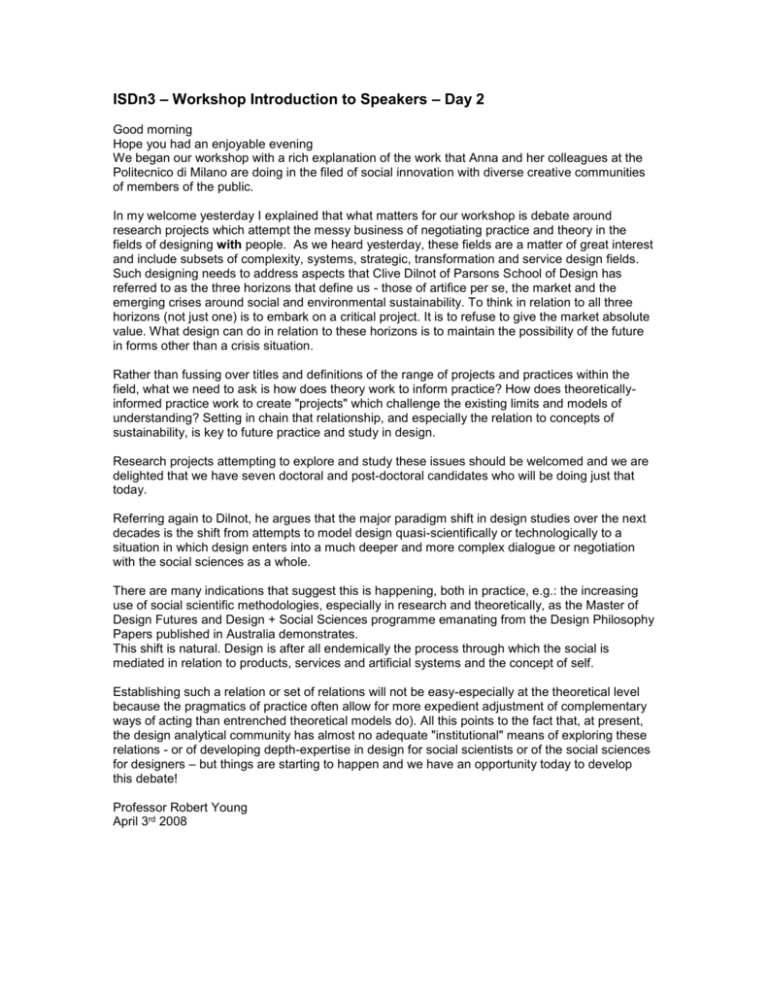
ISDn3 – Workshop Introduction to Speakers – Day 2 Good morning Hope you had an enjoyable evening We began our workshop with a rich explanation of the work that Anna and her colleagues at the Politecnico di Milano are doing in the filed of social innovation with diverse creative communities of members of the public. In my welcome yesterday I explained that what matters for our workshop is debate around research projects which attempt the messy business of negotiating practice and theory in the fields of designing with people. As we heard yesterday, these fields are a matter of great interest and include subsets of complexity, systems, strategic, transformation and service design fields. Such designing needs to address aspects that Clive Dilnot of Parsons School of Design has referred to as the three horizons that define us - those of artifice per se, the market and the emerging crises around social and environmental sustainability. To think in relation to all three horizons (not just one) is to embark on a critical project. It is to refuse to give the market absolute value. What design can do in relation to these horizons is to maintain the possibility of the future in forms other than a crisis situation. Rather than fussing over titles and definitions of the range of projects and practices within the field, what we need to ask is how does theory work to inform practice? How does theoreticallyinformed practice work to create "projects" which challenge the existing limits and models of understanding? Setting in chain that relationship, and especially the relation to concepts of sustainability, is key to future practice and study in design. Research projects attempting to explore and study these issues should be welcomed and we are delighted that we have seven doctoral and post-doctoral candidates who will be doing just that today. Referring again to Dilnot, he argues that the major paradigm shift in design studies over the next decades is the shift from attempts to model design quasi-scientifically or technologically to a situation in which design enters into a much deeper and more complex dialogue or negotiation with the social sciences as a whole. There are many indications that suggest this is happening, both in practice, e.g.: the increasing use of social scientific methodologies, especially in research and theoretically, as the Master of Design Futures and Design + Social Sciences programme emanating from the Design Philosophy Papers published in Australia demonstrates. This shift is natural. Design is after all endemically the process through which the social is mediated in relation to products, services and artificial systems and the concept of self. Establishing such a relation or set of relations will not be easy-especially at the theoretical level because the pragmatics of practice often allow for more expedient adjustment of complementary ways of acting than entrenched theoretical models do). All this points to the fact that, at present, the design analytical community has almost no adequate "institutional" means of exploring these relations - or of developing depth-expertise in design for social scientists or of the social sciences for designers – but things are starting to happen and we have an opportunity today to develop this debate! Professor Robert Young April 3rd 2008


